Corn Belt Weather Forecast Monitoring
CropProphet produces grain yield and production forecasts based on an advanced weather-driven model. It quantifies the impact of weather and weather forecasts on county, state, and national grain production using both “crop season-to-date” weather conditions and weather forecasts.
An important aspect of CropProphet is the use of weather forecast information from NOAA’s Global Ensemble Forecast System (GEFS) and the European Centre for Medium-Range Weather Forecasting ensemble forecast model. CropProphet’s models translate these weather forecasts into impacts for corn and soybean yield and production.
As a result, we monitor not only Corn Belt weather carefully but also the weather forecasts for this region. This includes monitoring how well recent forecasts have performed.
Monitoring Corn Belt Weather Forecasts – July 14 update
The July 14, 2020 update to the content posted below. The graph below monitors the performance of the two widely used weather forecasts for “ag weather” monitoring: ECMWF and the GEFS.
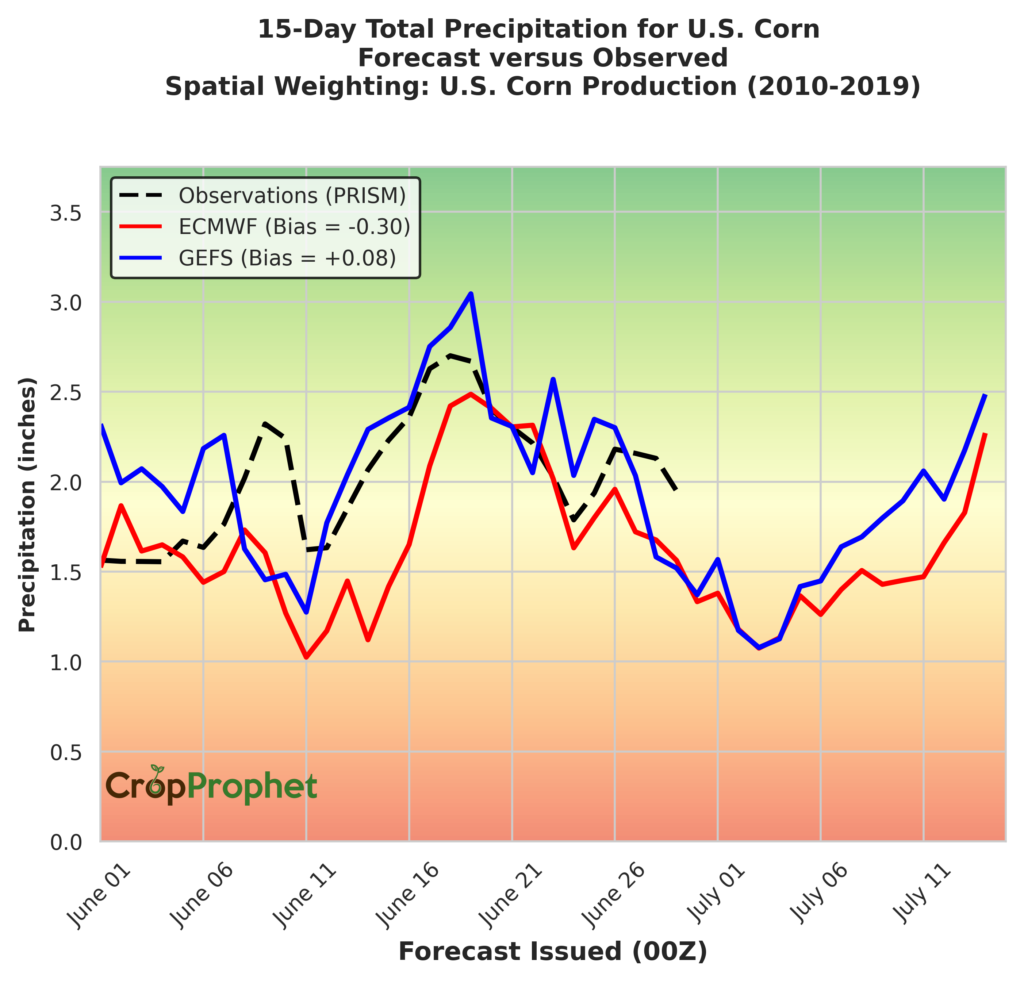
The same precipitation forecast data in “bias” terms.
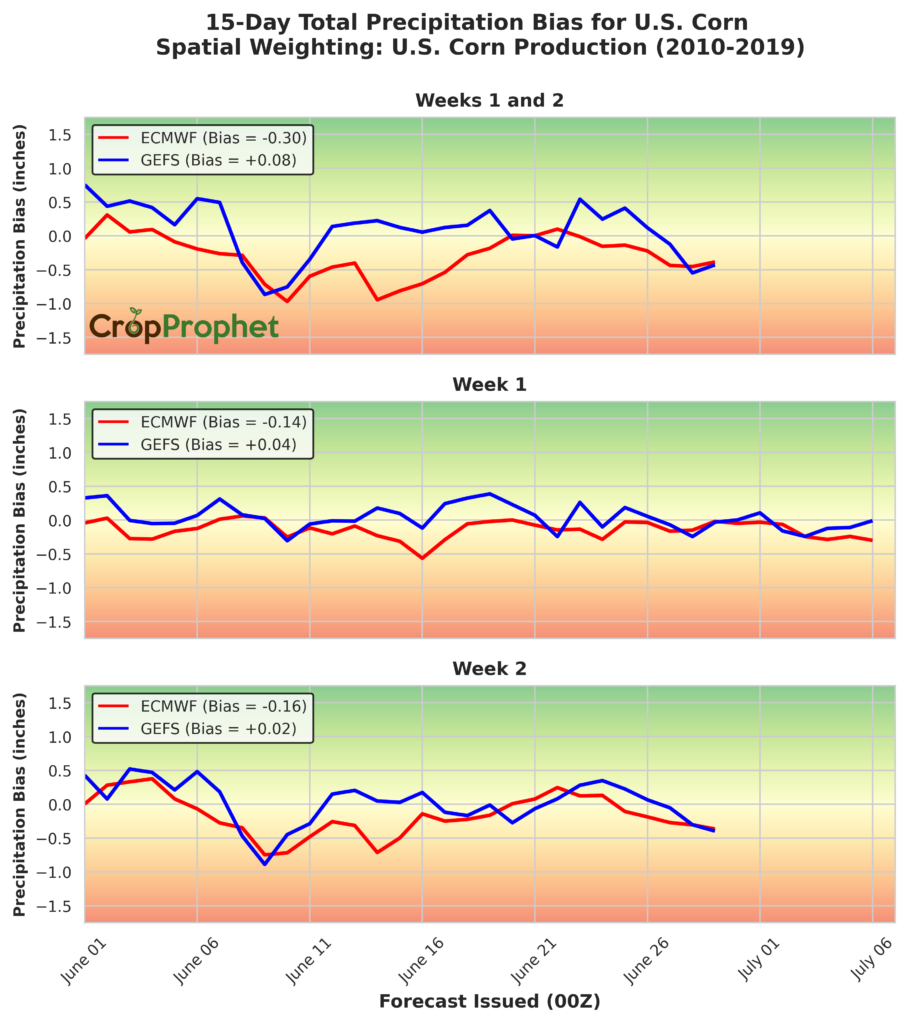
And, we can add other variables as well such as growing degree days.
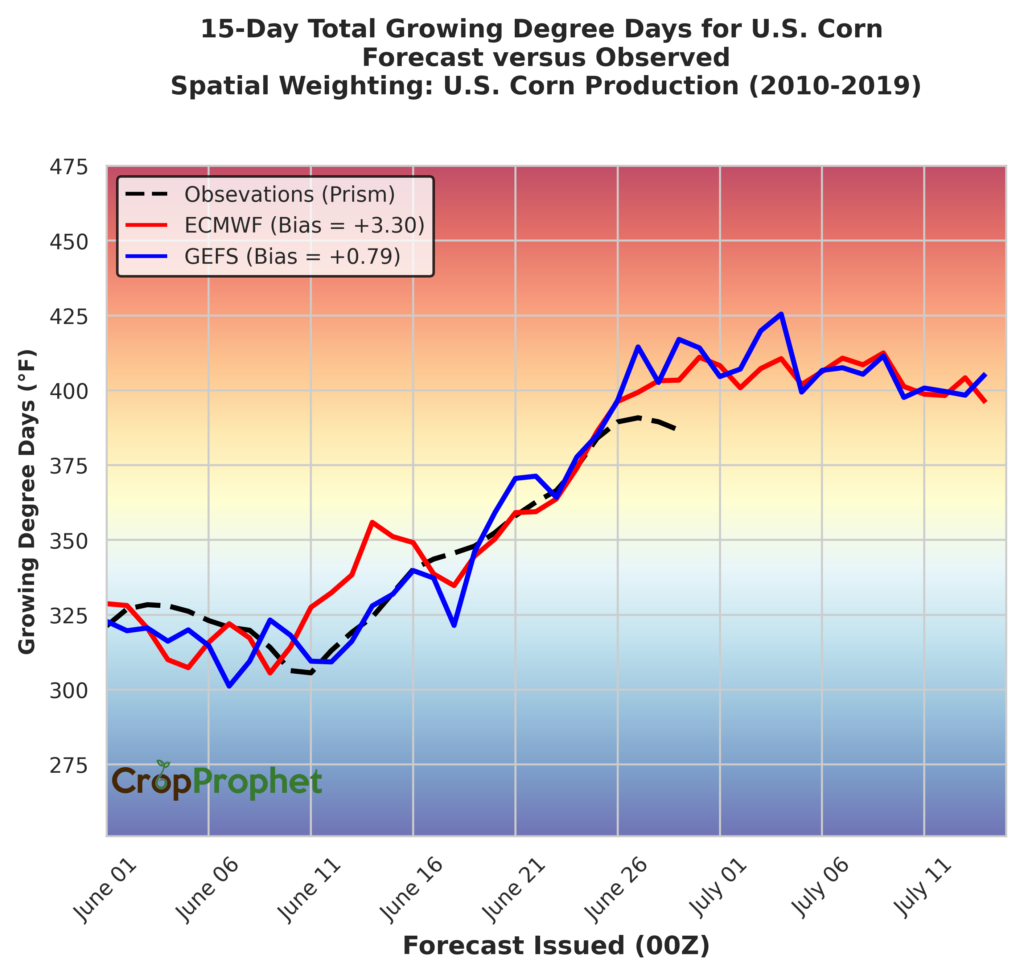
The growing degree data forecast performance can be shown in “bias” format as well, as shown below.
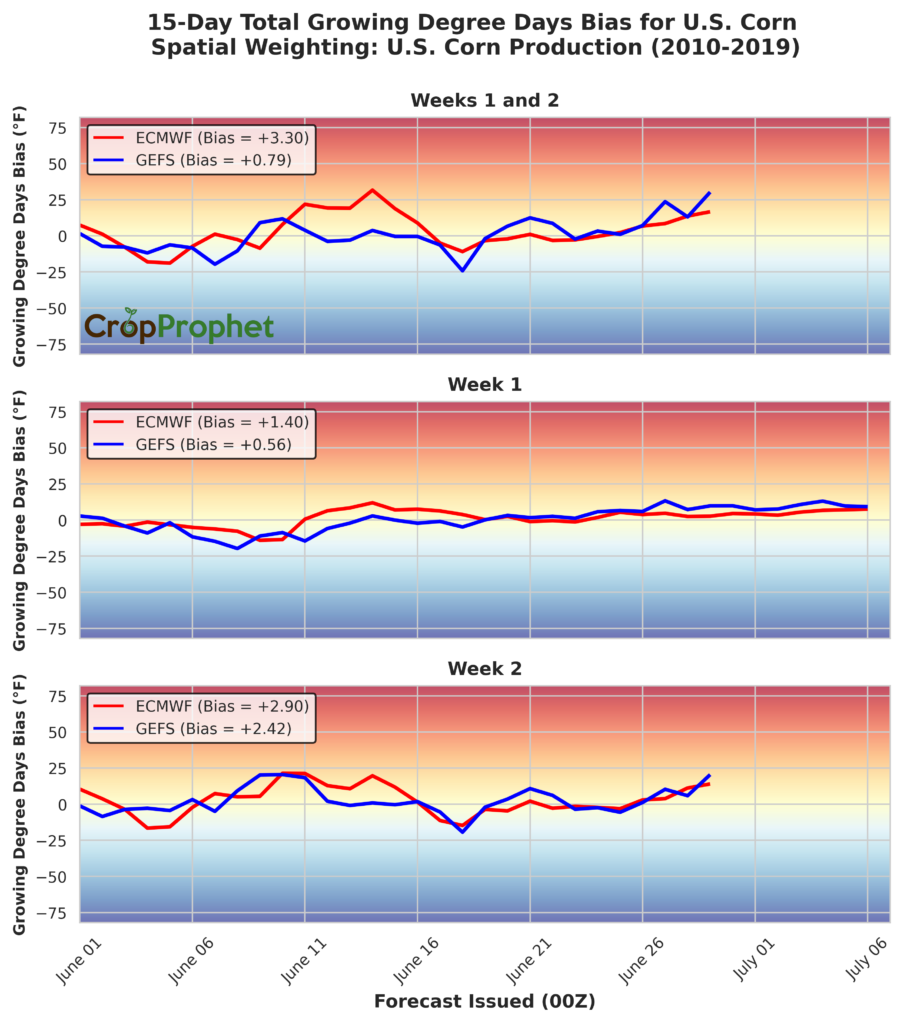
Monitoring Corn Belt Weather Forecasts – July 12
The graphic below shows both the GEFS and the ECMWF corn production-weighted 15-day precipitation forecasts since June 1, 2020.
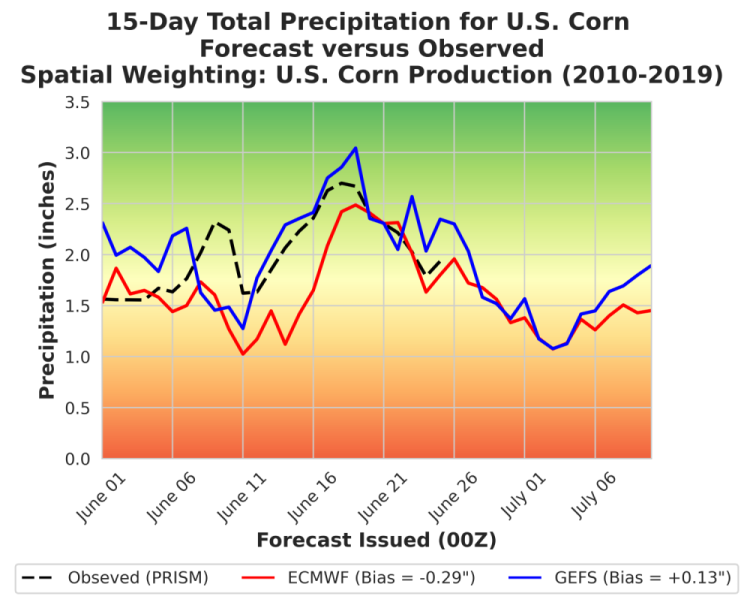
During the first half of June, the ECMWF forecast model had a negative bias, meaning it was under-predicting the amount of precipitation across the Corn Belt in the subsequent two weeks. The data since June 1 shows that the ECMWF model, on average, predicted 0.29 inches too little precipitation over the 15-day window, whereas the GEFS model predicted 0.13 inches too much.
This information can be viewed as biases directly. The graphic below shows the difference between the forecast and the observations over time.
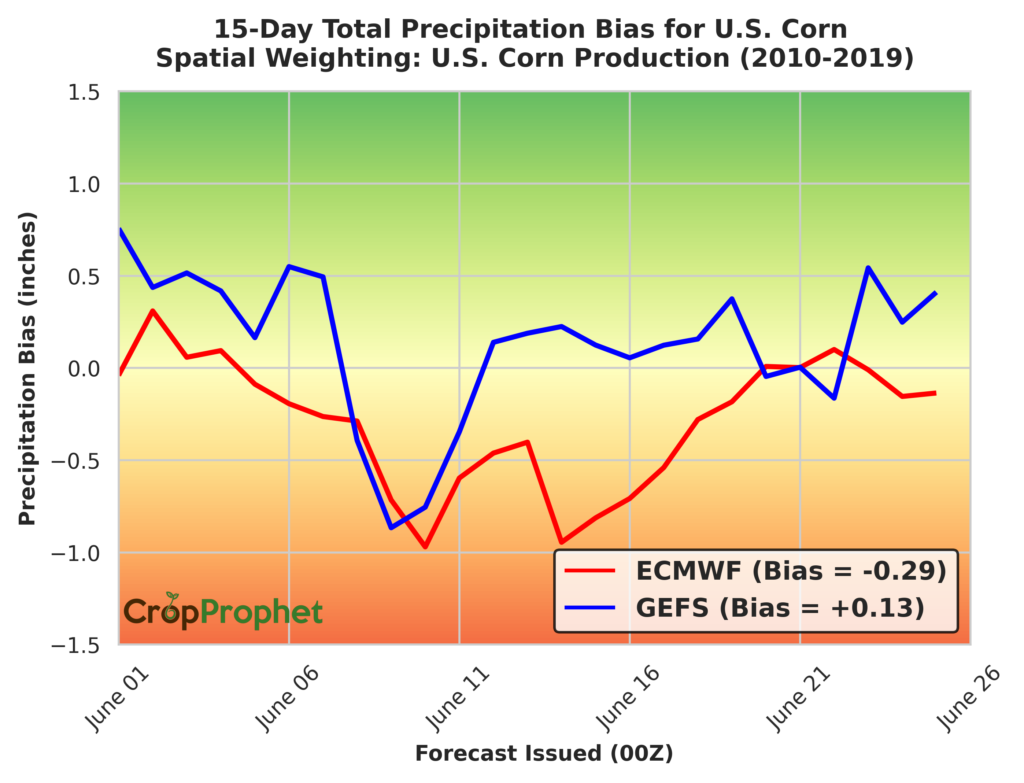
Finally, the forecast bias is demonstrated above for a 15 day period. We can also analyze the biases in the first and second weeks of the forecast, which are shown below. The precipitation biases are approximately equal for the two weeks, for both ECMWF and GEFS.
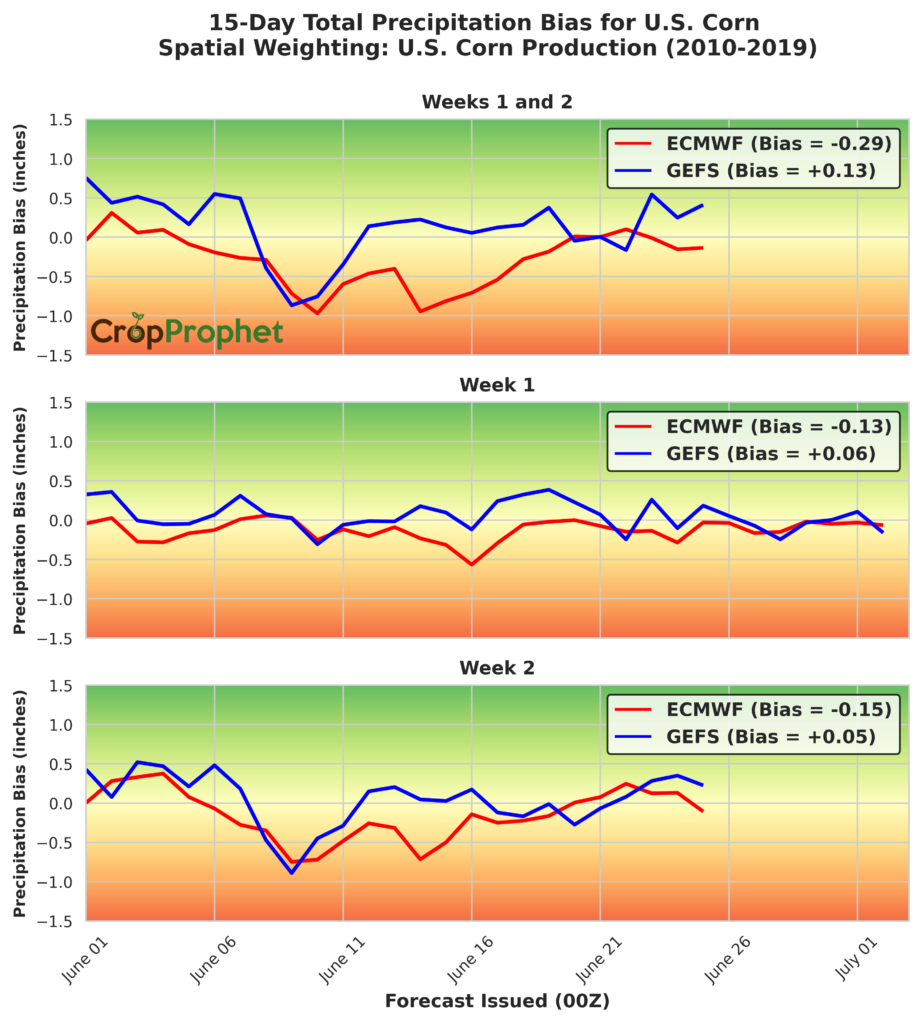
Conclusion
Our data confirm that the ECMWF ensemble forecast model has been consistently drier than GEFS since June 1, 2020. High-quality PRISM observations further indicate that the ECMWF has been too dry over this time period.
Keep in mind, however, that the time period shown is a small sample, and the ECMWF upgraded their forecast model on June 30th, 2020. If the upgrade had not happened, we’d consider applying a correction to the ECMWF forecast information given the biases displayed. However, because of the upgrade, there is no way to rigorously assess the bias of the new model and apply a reliable bias correction to the real-time forecasts.
Request a trial of CropProphet.